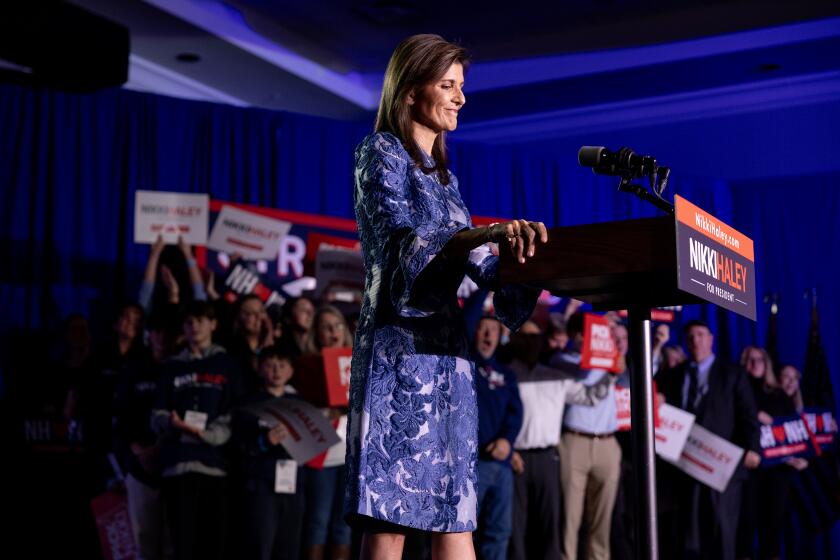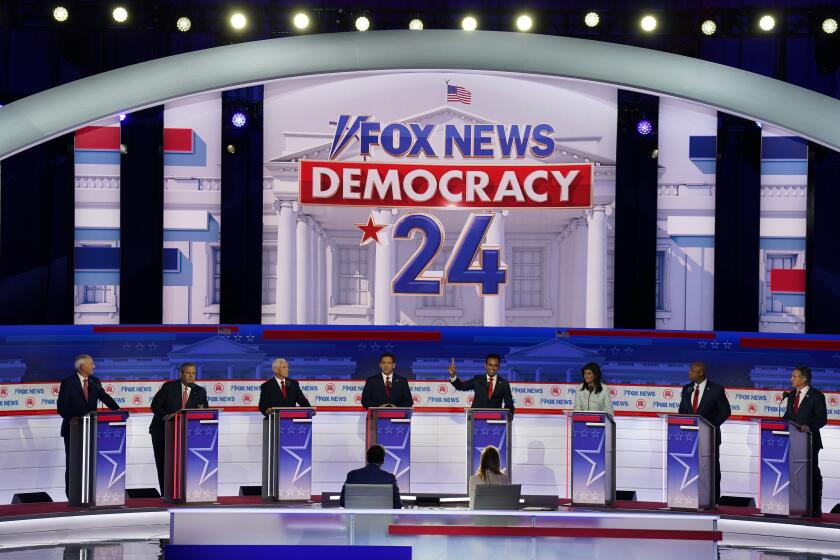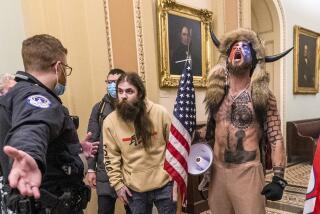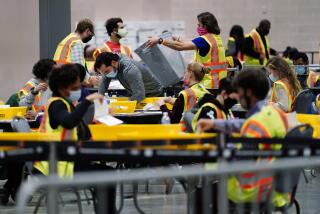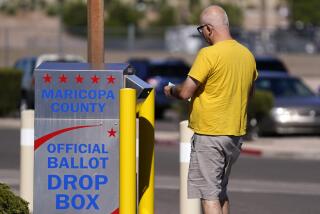Opinion: Have New Hampshire and Iowa lost the power to pick presidents? It’s complicated
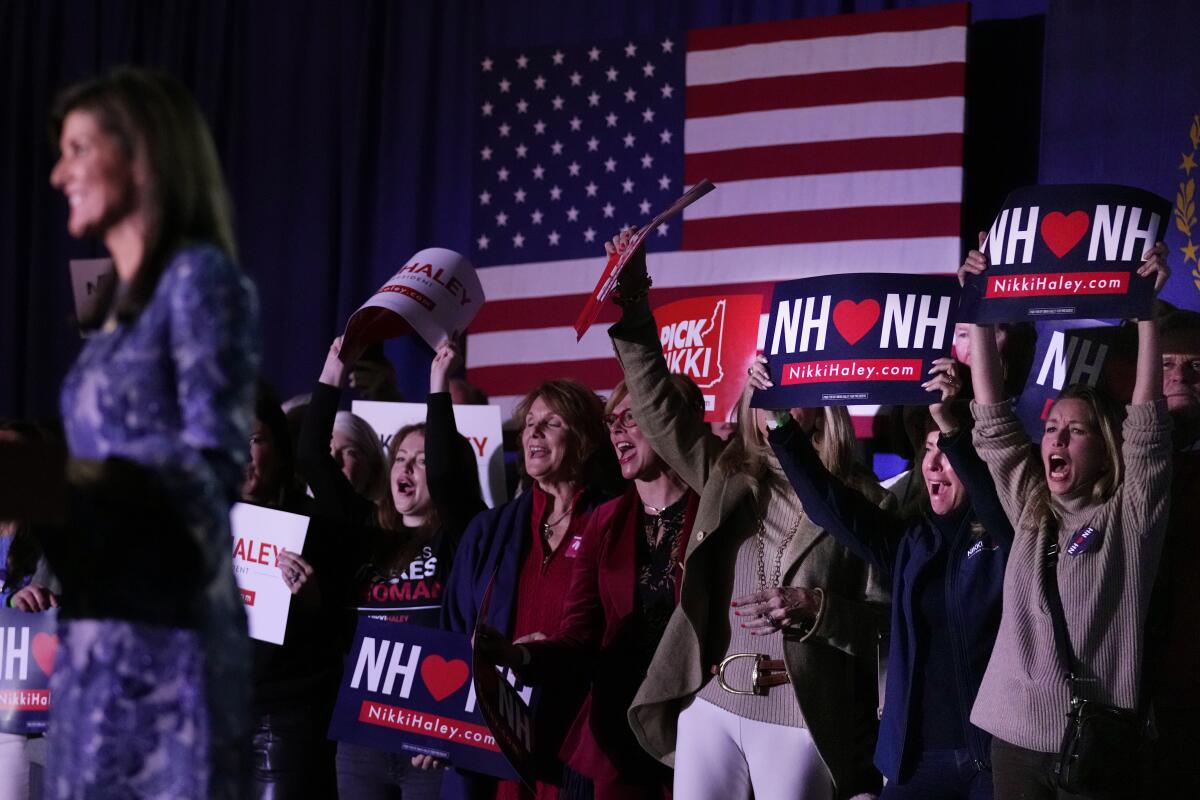
- Share via
New Hampshire voters headed to the polls this week more than a month before most voters will have an opportunity to weigh in on the presidential nominations. They were preceded only by the small number of Iowans who braved subzero temperatures last week to participate in the nation’s first Republican caucuses.
We nevertheless appear to remain on a collision course with a Biden-Trump rematch that nobody wants. But we shouldn’t blame Iowa and New Hampshire for that.
Voters in these early states, along with the political elites who fight to protect their privilege, tend to take their role very seriously and believe they are especially equipped to evaluate the candidates. They have been called “presidential wine tasters” who may not make a choice until they shake hands with every hopeful. Ever since Jimmy Carter won the 1976 Iowa caucuses and was catapulted to the nomination by the momentum — what George H.W. Bush called “big mo” — voters in the early states have been widely regarded as kingmakers.
It is ominous that one of the two major parties would nominate such a manifestly unfit demagogue for the presidency. But that is where America finds itself.
The reality, however, is not so simple. Donald Trump is the first non-incumbent Republican to win both Iowa and New Hampshire in the modern era. On the Democratic side, since Carter, only Al Gore and John Kerry have won both. Moreover, winning either state is rarely associated with winning the presidency the following November.
The presidential nomination process was overhauled following the 1968 election with the intent of taking power from party elites and handing it to voters. The resulting system is federalist: The national parties set guidelines, and the state parties structure their contests within those boundaries. Most states are allowed to hold primaries and caucuses between early March and mid-June, but a few are granted exemptions to hold earlier contests.
In 2008, Nevada and South Carolina were added to the early contests in predominantly white and rural Iowa and New Hampshire to increase diversity. The Democratic Party sought to bring even more diversity to the front with additional changes this year.
That made the nomination process even more complicated. Now some states are holding separate Democratic and Republican primaries and caucuses (Michigan, Nevada); others wanted an early contest so desperately that they scheduled it in violation of national party rules (New Hampshire). States often fight for an early primary because it brings outsize attention from candidates and the media.
After Nikki Haley, Ron DeSantis and other candidates said they would support Donald Trump even if he was convicted, it was obvious they weren’t in the race to defeat Trump.
But Iowa, New Hampshire and other early states don’t pick presidents so much as they help narrow the possibilities. At one point, more than a dozen Republican contenders were seeking this year’s nomination. Two weeks into the voting, we’re down to just two. Candidates often bow out early, sometimes before any voting takes place, so they are not seen as damaged goods, don’t waste precious resources and preserve their political futures. Such calculations certainly played into Florida Gov. Ron DeSantis’ decision to withdraw days after Iowa.
Trump has only 32 of the 1,125 delegates needed to win the nomination; his onetime U.N. ambassador, Nikki Haley, is only 15 delegates behind and has pledged to stay in the race until her home state, South Carolina, votes in about a month. Yet it appears likely that there will be a presumptive nominee by the time the rest of us get a chance to weigh in.
While some nomination contests, such as the 2008 battle between Hillary Clinton and Barack Obama, lasted for the duration of the calendar, other competitive races have been decided quickly. In 2000, George W. Bush and Gore both became the presumptive nominees after just 45 days, before half of the states held their contests.
Though the early states don’t decide, they can help shape the trajectory of the race. They have given candidates second chances, as with Bill Clinton in 1992; slowed apparent coronations, as John McCain and Bernie Sanders did against Bush and Hillary Clinton in 2000 and 2016, respectively; or effectively sealed the deal, as appears to be the case with Trump this year.
But the early contests don’t winnow the field and shape our choices on their own. While the parties have less power than they did 60 years ago, party elites still influence nominations through endorsements in the “invisible primary” stage, before the voting begins. This year, for instance, the vast majority of Republican elites who have made endorsements have backed Trump.
Focusing on the early states can blur the bigger picture. Trump and Biden led the polls for most or all of the invisible primary period, frequently by more than 50 points. Both solidified the support of party elites and dominated endorsements early on. Iowa and New Hampshire only confirmed what was fairly clear for more than a year: 2024 is likely to yield another contest between Trump and Biden whether we want it or not.
Caitlin E. Jewitt is an associate professor of political science at Virginia Tech and the author of “The Primary Rules: Parties, Voters, and Presidential Nominations.” Gregory Shufeldt is an associate professor of political science at the University of Indianapolis and a former Public Voices fellow with the OpEd Project.
More to Read
A cure for the common opinion
Get thought-provoking perspectives with our weekly newsletter.
You may occasionally receive promotional content from the Los Angeles Times.
